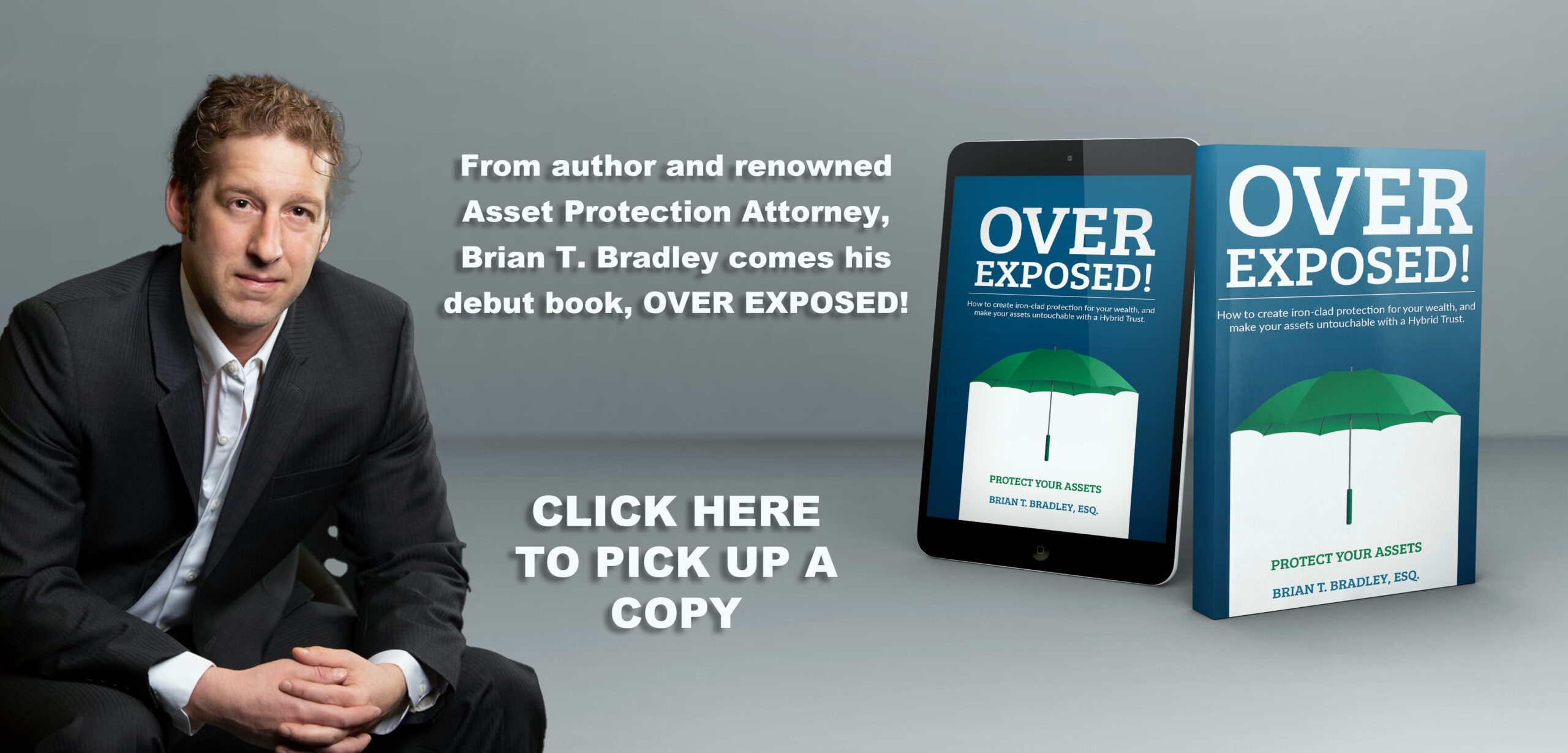Bankruptcy is a simple concept to understand: create a fresh start without the burden of an overload of debt. But bankruptcy is very misunderstood and today, more and more people jump into bankruptcy as a first option.
As a real estate investor you should understand the difference between two very big concepts. “Collection defense” and “debt relief” also known as “asset protection” and “bankruptcy”. They are somewhat related, but they are also very different.
Debt Relief
Starting with “debt relief”, it does what its name says, it gives you relief from the debt itself. Or payment of the debt in full. Once paid in full, you are relieved from any more obligations. Or you can settle it for less than a full payment by negotiating with creditors. This is called a ‘settlement.’ Unfortunately, the option most people actually think of and run to first is bankruptcy.
Bankruptcy
Bankruptcy is another form of debt relief. Its function is to relieve you of your debt through a legal process. In its simple form, the person who declares bankruptcy basically is saying that their debt exceeds their assets and once all of the available assets are used, you should be relieved from any further debts. When this happens, the bankruptcy is ‘discharged’ and you get a fresh start. Another common thought of using bankruptcy is as a last resort. “If I lose my case, I’ll just file for bankruptcy.” I hear this statement often from scared doctors. I have even used this tactic for clients in court to try to force settlements. Most clients think that if a huge lawsuit comes their way, they can simply declare bankruptcy, have the judgment forgotten and simply continue on with their normal life.
Bankruptcy should not be a first choice
Now, in my litigation experience, bankruptcy is at times an appealing option when you are facing a creditor because of the ‘full relief from debt’, especially if the debt exceeds the assets you have. BUT, however attractive bankruptcy appears, it’s not an easy process, especially since the Bankruptcy Abuse Prevention and Consumer Prevention Act of 2005 passed. It makes it harder to use bankruptcy and gives more rights and remedies to creditors. And you need to get a court and bankruptcy trustee or judge involved and a lawyer. I seldomly recommend bankruptcy as a first course of action. Especially when the amount of assets you have exceed the debt. Even worse, bankruptcy can actually undo most forms of asset protection. So the debts you have must be considered very carefully before jumping off the bridge of bankruptcy. Also, besides the damage bankruptcy causes to your credit and the rebuilding process over the next seven years, there are many more consequences originating from federal and state bankruptcy that governs your lifestyle.
For example, Federal bankruptcy rules state that a married couple can have $34,850 in home equity after bankruptcy. But if you are an investor, or a doctor or other high risk professional you have more equity in your home than that. So you will need to be prepared to sell the house, and give its profits to your debtors. Also, bankruptcy exemption rules are very specific about business “tools of the trade”. A successful doctor or business entrepreneur may have a thriving practice or business with a state-of-the-art office. But if you declare bankruptcy, all of those “tools of the trade” will be sold off to debtors except for $1,750. What type of business are you going to be able to keep running with just $1,750 in equipment? The point is that declaring bankruptcy may be easy and avoid paying off a lawsuit debt, but it will be very difficult having to change your lifestyle and business.
Collection Defense
Now on the other side of the coin we have “collection defense”. This process does not actually focus on relief from the judgment itself, but from keeping the judgment creditor away from your assets. What you are trying to do is make the assets unavailable to the creditor. One method is through having assets reclassified as an exemption. Most creditors try to avoid going after assets classified as exempt.
Another option of collection defense is to separate the assets from the debt. This can be done by using some of the legal tools available to attorney’s like creating companies, LLC’s, LP’s, partnerships and using Asset Protection Trusts that you can place your assets out of the direct reach of a creditor, while still maintaining use of those assets.
This is why asset protection has proven to be very effective in keeping creditors away from your assets.
Now, the creditor is still going to knock on your door and make your life more difficult by trying to collect. Generally, you are not going to be able to just make them magically go away. The GOAL of asset protection when we are talking about collection defense is DEBT RELIEF! This is done most of the time by the fact that the creditor cannot easily reach the assets to get what they call a “positive – settlement”. Once the creditor discovers that you have no bank account to seize and no real estate in your name to place a lien on, they become a lot more flexible and magically are open to talking about discounting the judgment and settling.
The thing to remember is that all this takes time. Creditors need to go through their own processes and prove to themselves that they cannot collect before they consider other options. And then you, the person in debt, are often in a rush. And when you are in a rush you send the message that you are vulnerable and anxious. You need to just relax, have your asset protection system in place before hand, and let those creditors bump up against your legal defensive tools. This will improve your negotiating position.
So you can see that bankruptcy is not always the best first choice and it actually has some negative implications on asset protection and lifestyle, and the two really don’t t mix. They really are like oil and water. Instead of laying all your assets on the table in front of a bankruptcy court and hopping for the best outcome, a properly constructed asset protection trust or system focuses on actually protecting your assets directly from collection. The outcome tends to be a lot better because the creditors choose to settle with you. A properly drafted plan like a (FAPT) Cook Islands Trust or its hybrid Bridge Trust are virtually impenetrable to a judgment creditor.
Just make sure you consider all your options before filing for bankruptcy and talk to an asset protection specialist. Better yet, have an asset protection plan and system in place before you ever need it.
By: Brian T. Bradley, Esq.
HNW – Asset Protection Attorney as featured on Simple Passive Cash Flow Podcast by Lane Kawaoka https://www.youtube.com/watch?v=-omB8-jY_7k


Recent Comments